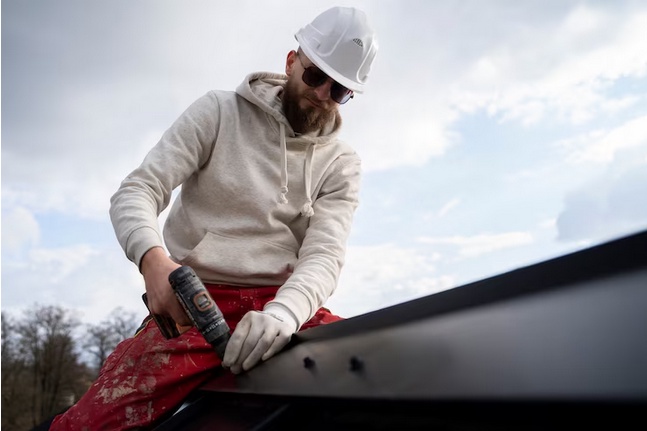Introduction:
The roof of a building plays a crucial role in its overall performance and energy efficiency. Among the various types of roofs, pitched roofs have gained popularity due to their aesthetic appeal and efficient water drainage. One of the key components in ensuring the effectiveness of a pitched roof is the choice of insulation. Proper insulation not only enhances thermal comfort but also contributes to energy conservation and cost savings. This guide aims to provide a comprehensive overview of selecting the best insulation for pitched roof, considering factors such as insulation types, materials, installation methods, and long-term benefits.
Importance of Pitched Roof Insulation:
Pitched roofs, characterized by their sloping surfaces, are prevalent in various architectural styles. Insulating these roofs is crucial for maintaining a comfortable indoor environment. Effective insulation prevents heat loss during the colder months and heat gain during warmer seasons. It helps create a consistent indoor temperature, reduces energy consumption for heating and cooling, and lowers utility bills. Furthermore, proper insulation can extend the lifespan of roofing materials by minimizing temperature-related stress and moisture buildup.
Types of Insulation:
There are several insulation types suitable for pitched roofs, each with distinct characteristics and benefits. Blanket insulation, composed of flexible materials like fiberglass or mineral wool, is a common choice. It comes in rolls or batts and is relatively easy to install between roof joists. Another option is spray foam insulation, which provides an airtight seal and can be applied in hard-to-reach areas. Reflective insulation, often used in combination with other types, reflects radiant heat away from the roof. Finally, rigid board insulation offers high thermal resistance and can be installed on the roof deck or between rafters.
Factors Influencing Insulation Choice:
-
Climate and Location: The climate of the region plays a significant role in insulation selection. Colder climates require higher R-values (a measure of thermal resistance), while warmer regions focus on preventing heat gain.
-
R-Value Requirements: Different regions have building codes specifying minimum R-values for insulation. It's important to meet or exceed these requirements for optimal energy efficiency.
-
Roof Structure and Space: The design of the roof, including rafter depth and spacing, affects the type of insulation that can be used. Limited space might require insulation with higher R-values.
-
Moisture Resistance: Preventing moisture buildup is vital to avoid rot, mold, and structural damage. Insulation with moisture-resistant properties is essential, especially in humid climates.
-
Installation Complexity: Some insulation types are easier to install than others. Consider the complexity of installation and whether professional help is needed.
-
Cost Considerations: Different insulation materials come with varying costs. However, it's crucial to balance upfront expenses with long-term energy savings.
Insulation Materials:
-
Fiberglass: This is a widely used insulation material known for its affordability and thermal performance. It's available as loose-fill or batts and is non-combustible.
-
Mineral Wool: Similar to fiberglass, mineral wool offers good fire resistance and soundproofing qualities. It's made from natural or recycled materials.
-
Cellulose: Made from recycled paper, cellulose insulation is eco-friendly and can be blown into hard-to-reach areas. It has good resistance to airflow.
-
Spray Foam: This insulation type provides an airtight seal, expanding upon application. It's effective at preventing air leakage and can even add structural strength.
-
Reflective Foil Insulation: Reflective insulation panels with foil facing are effective against radiant heat transfer. They are often used in combination with other insulation types.
-
Rigid Foam Boards: These boards offer high R-values and are useful for insulating roofs with limited space. They are resistant to moisture and can be used in various roof assemblies.
Installation Methods:
-
Unvented Roof Assembly: In this method, insulation is placed above the roof deck, creating a conditioned attic space. This approach minimizes temperature variations and reduces the risk of condensation.
-
Vented Roof Assembly: Here, insulation is installed between the rafters, and the attic space is vented to allow airflow. This helps regulate temperature and moisture.
-
Hybrid Roof Assembly: Combining various insulation types and methods can provide comprehensive thermal protection. For instance, rigid foam boards can be added to the roof deck while still allowing for venting.
Conclusion:
Selecting the right insulation for a pitched roof is a critical decision that impacts a building's energy efficiency, comfort, and overall performance. Factors such as climate, R-value requirements, roof structure, and budget must all be carefully considered. Fiberglass, mineral wool, cellulose, spray foam, reflective foil, and rigid foam boards are all viable options, each with its own advantages. The installation method—unvented, vented, or hybrid—depends on specific needs and goals. As the construction industry continues to prioritize sustainable and energy-efficient practices, the choice of insulation for pitched roofs plays a pivotal role in achieving these objectives. By making informed decisions about insulation, property owners can create a well-insulated pitched roof that provides lasting comfort and significant energy savings over time.


No comments yet